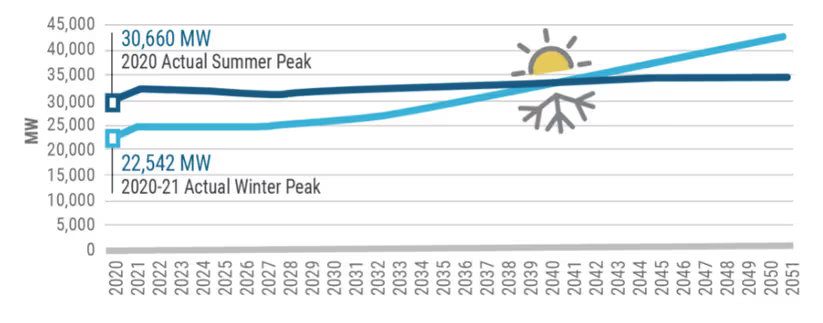Heating Up: The Rise of Electric Heating and Its Impact on the Grid
A Balancing Act of Consumer Savings and Grid Reliability

Electric heating is gaining momentum as a way to reduce greenhouse gas emissions. Heat pumps offer a cleaner and more efficient alternative to traditional fossil fuel-fired furnaces, but they also present challenges for the power grid. This blog post delves into the rise of electric heating, exploring its benefits and challenges.
The Rise of Electric Heating
As temperatures drop in the Northern Hemisphere, a key decarbonization trend comes into focus - the electrification of home heating. Electric heating systems, such as heat pumps, offer a more sustainable and efficient alternative to traditional fossil fuel-fired furnaces while consuming up to 50% less energy than electric resistive heaters. As the adoption of electric heating grows, the grid and transmission system must adapt to accommodate the increased demand.
Electric heating systems offer several advantages over traditional fossil fuel-based systems. They are more efficient, meaning they convert more of the electricity used into heat. This can lead to lower energy bills for homeowners. Additionally, electric heating systems produce no emissions, which can help to improve air quality and reduce greenhouse gas emissions. A recent study found that a typical U.S. home can cut its heating-related climate pollution by 45-72% by swapping out a gas-fired furnace for an efficient, all-electric heat pump.
In the US, residential energy (mainly heating and cooling) accounts for 15.7% of all energy used across all sectors. According to the IEA, global sales of heat pumps grew by 11%, compared to 2021. Europe, Japan and the United States saw the highest growth in sales, with increases of 40%, 19% and 11%, respectively. In France and the United States, heat pumps outsold fossil fuel-based heating systems in 2022. This impressive growth has been catalyzed by incentives, declining costs, and increased awareness of environmental incentives. These factors are expected to continue accelerating adoption.
Too Hot to Handle?

The benefits of heating electrification to our climate and pocketbooks are clear but come with challenges to our grid. As more aspects of our lives go electric, the amount of power needed increases in the form of load growth. Increasing energy demand from heating may shift demand, with winter peak demand becoming more erratic and passing summer peak demand with up to 500 GW of noncoincident peak load. Winter storms, reduced solar generation, and increased electricity usage could double or triple winter utility loads, risking blackouts and disruptions.
The grid needs to be upgraded to accommodate this increased demand for renewable energy. The Brattle Group estimated that between 200-800 Gigawatts of new generating capacity will need to be produced by 2050, with $90-$600 billion invested in transmission to meet the overall demand for electrification.

With permitting hurdles, lengthy interconnection queues, and increasing public opposition to infrastructure projects, more needs to be done to proactively address the coming wave of electrification.
One way to improve grid efficiency is to use Dynamic Line Ratings (DLR), which allows for real-time monitoring of the capacity of power lines. This information can be used to safely increase the amount of electricity that can be transmitted over a line without overloading it.
DLR's benefits are proven:
- A study of the ERCOT Grid found a 77% reduction in congestion costs and the integration of about 2.5 GW of renewable energy.
- A DLR project in New York is expected to decrease renewables curtailment by over 350 MW and enhance capacity by 190 MW, eliminating the need to rebuild 26 miles of transmission lines.
- The Brattle Group found that GETs will increase the utilization level of existing 345 kV lines by 16% and can mitigate unexpected congestion triggered by new lines.
- On existing infrastructure, DLR can provide up to 40% additional line capacity while enabling renewable integration, reducing congestion costs, and fortifying the grid. This augmented capacity empowers operators to manage power during planned and emergency outages without compromising reliability.

